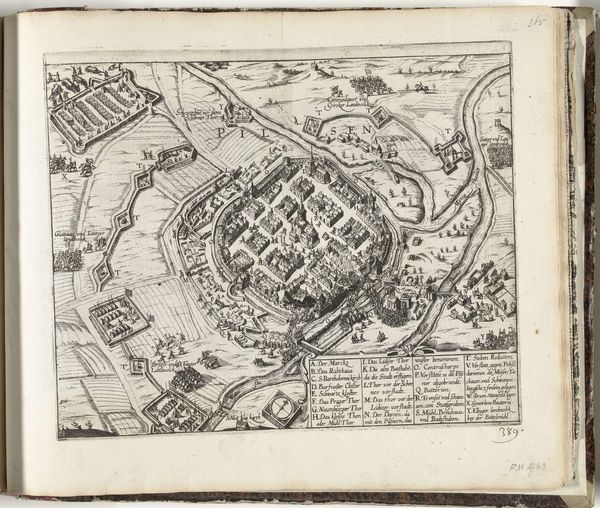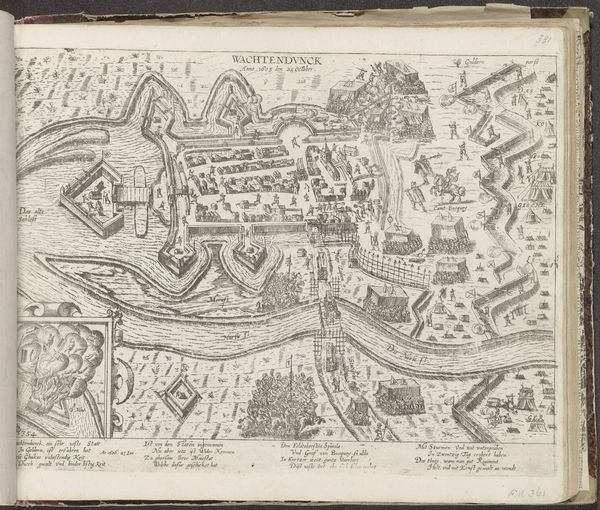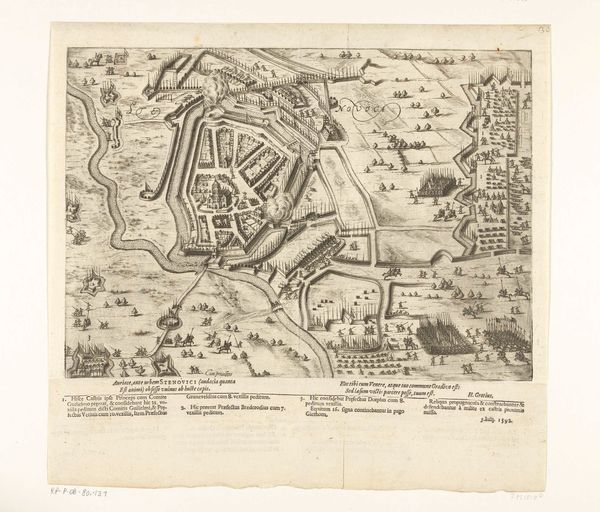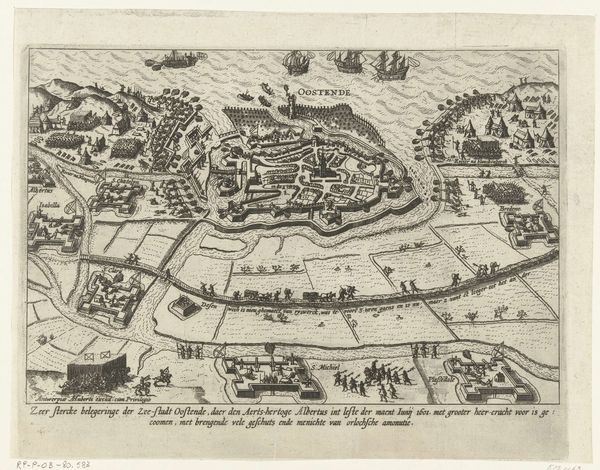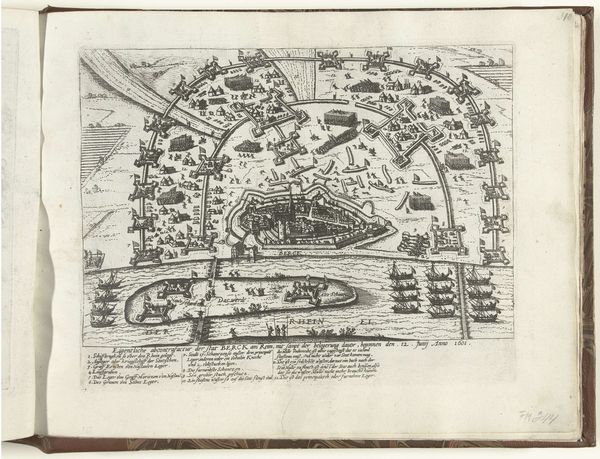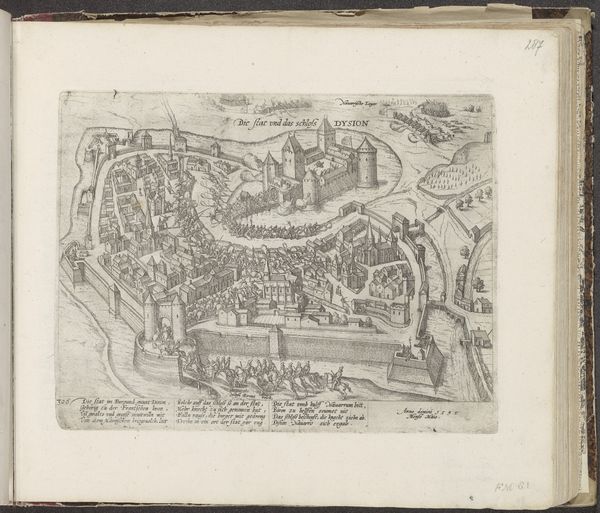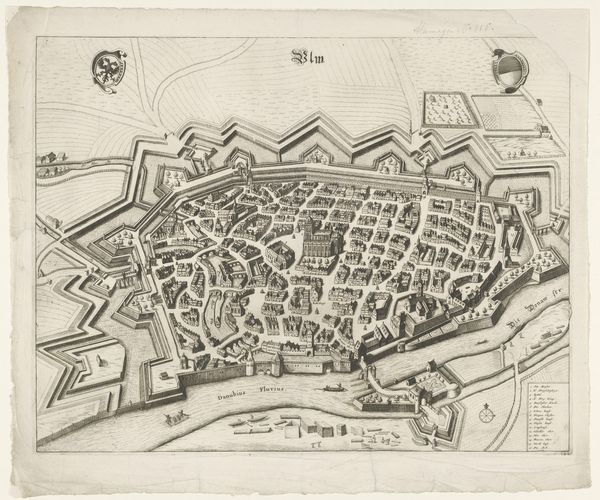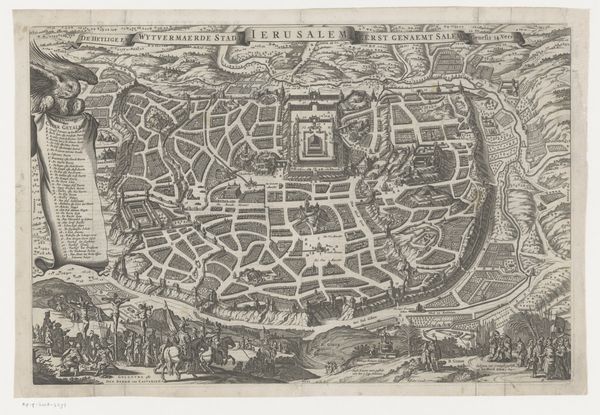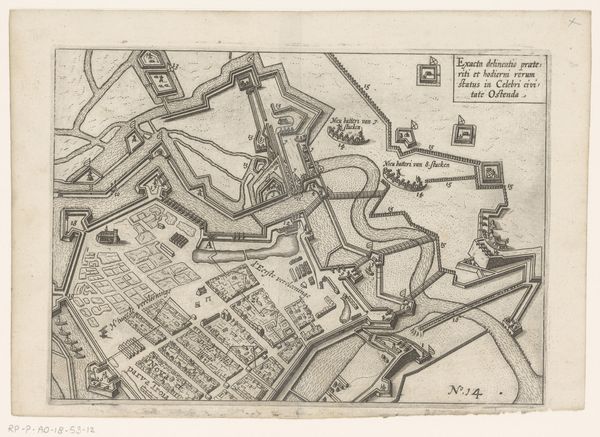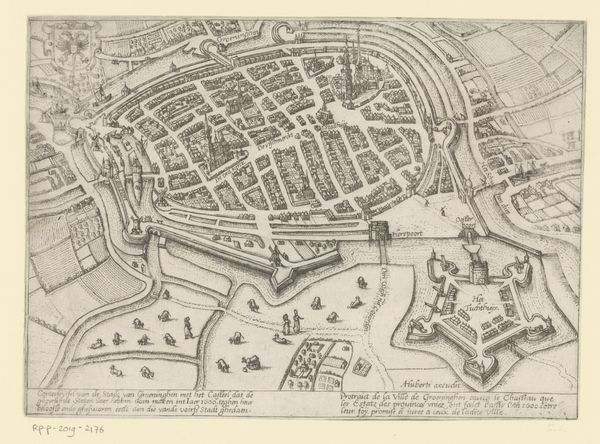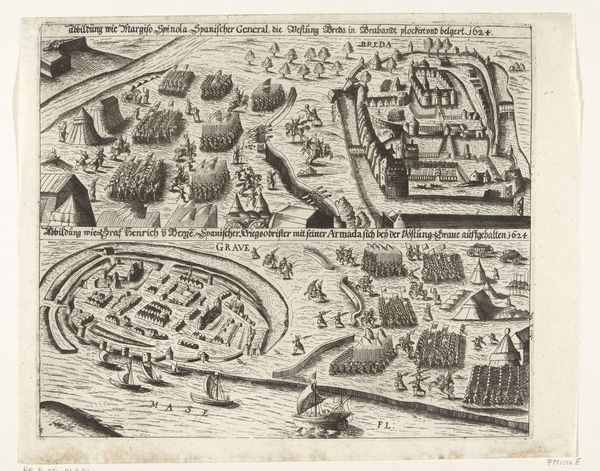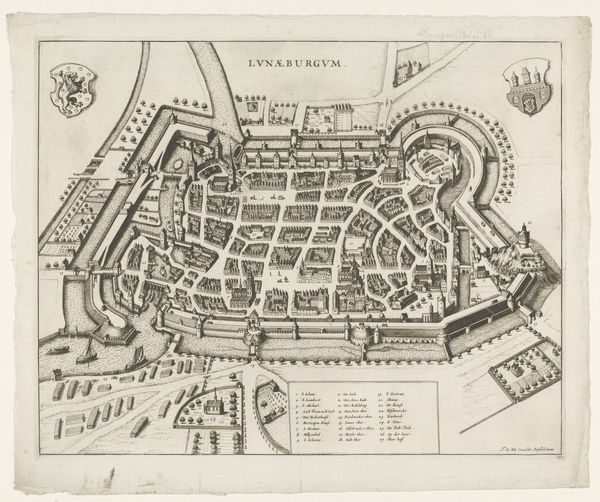
#
pen drawing
#
mechanical pen drawing
#
pen illustration
#
pen sketch
#
old engraving style
#
personal sketchbook
#
pen-ink sketch
#
pen work
#
sketchbook drawing
#
sketchbook art
Dimensions: height 210 mm, width 280 mm
Copyright: Rijks Museum: Open Domain
Curator: We are looking at "Beleg van Grave, 1602", a pen drawing dating from between 1602 and 1604 by Frans Hogenberg, currently held in the Rijksmuseum. What are your first impressions? Editor: The density of lines really strikes me—a painstaking, almost obsessive rendering of conflict and containment. It's incredibly detailed, conveying both the geometric rigidity of the fortress and the chaotic flurry of military action surrounding it. Curator: Indeed. Hogenberg has employed a bird's-eye view, meticulously mapping the siege with architectural precision. Notice the contrast between the intricate city layout within the walls and the more organic, almost sprawling encampments of the besieging forces outside. Editor: This is more than just a battle plan, though. It reads like a social diagram of power and resistance. Consider who is positioned where, and how this geography reinforces the power structures of the time, yet also reveals vulnerabilities. The people of Grave resisting the siege from within! Curator: Precisely. Semiotically, the walls represent not just physical barriers but also ideological ones, encapsulating the values and order of the city against external forces. The consistent hatching and line weight create a unified field of visual information, reflecting the calculated nature of military strategy. Editor: The level of detail begs us to question whose perspective this is presented from. It surely valorizes the military leaders and nobility who commissioned such images and benefitted directly from the exertion of violence, rather than documenting a supposedly "objective" historical event. Curator: The image possesses undeniable compositional balance, achieving stability in a chaotic subject matter. Consider also the role of light and shadow, achieved through the hatching, creating depth and lending form to the structures, and therefore reinforcing the impression of military power. Editor: It's fascinating to think about the role images like this had in shaping public perception of the Eighty Years’ War and normalizing acts of military might. This becomes evident once we consider the artist's intended audience beyond his noble commissioners, thus, situating such an artwork within a greater system of colonial competition and justification. Curator: This pen drawing provides not just a record of a historical event but a document reflecting 17th-century representational strategies. Editor: This provides insights into both the spatial politics of warfare and how graphic media could bolster such strategic acts within society.
Comments
No comments
Be the first to comment and join the conversation on the ultimate creative platform.
